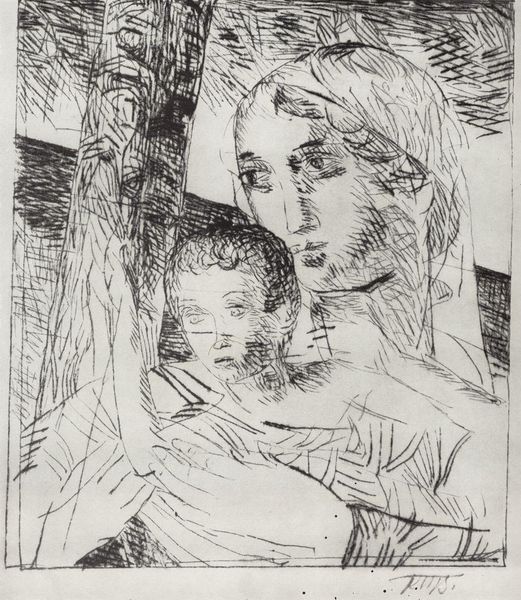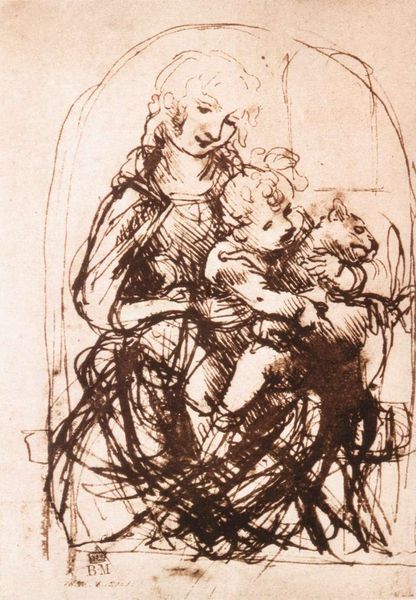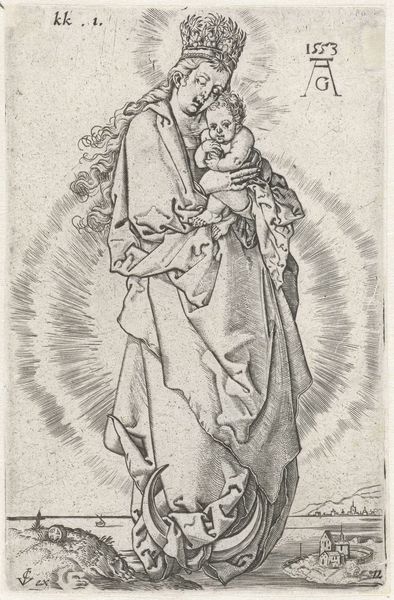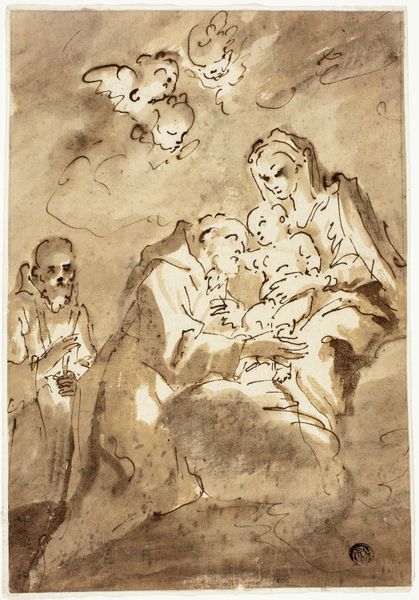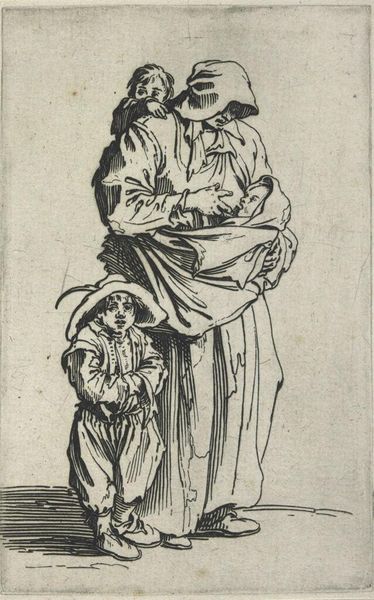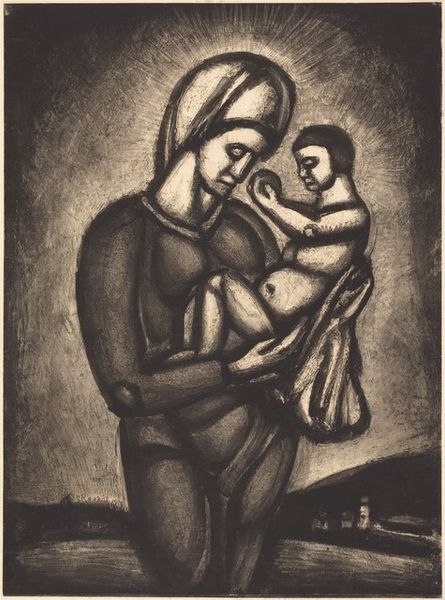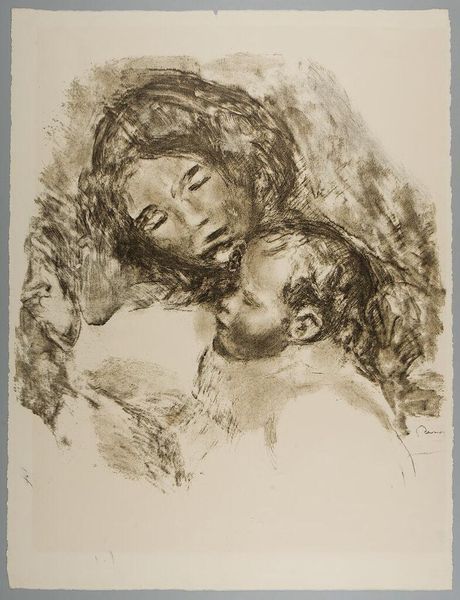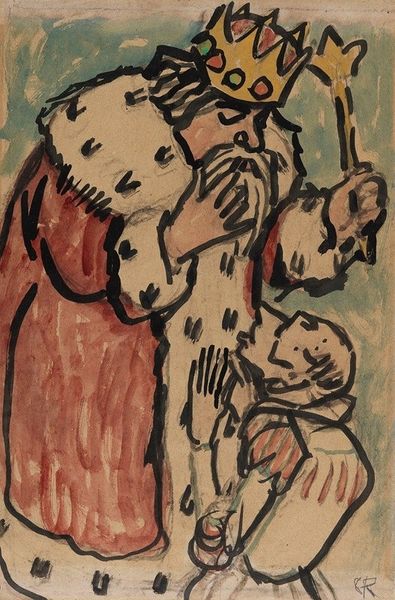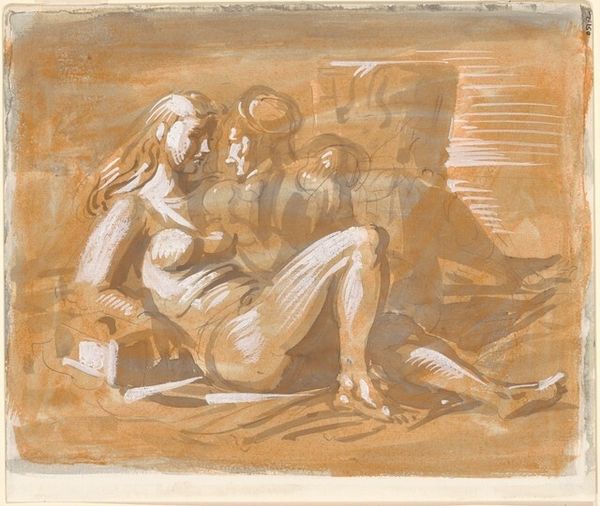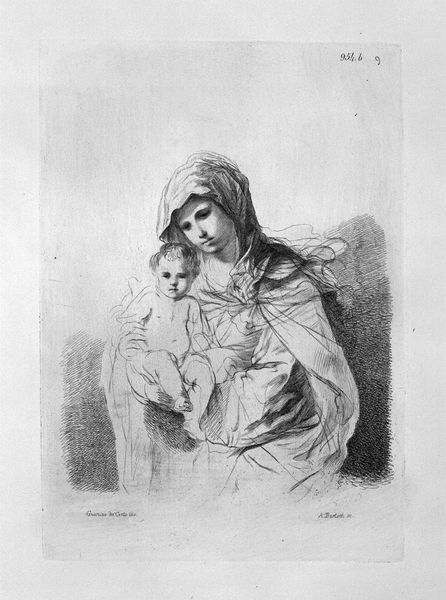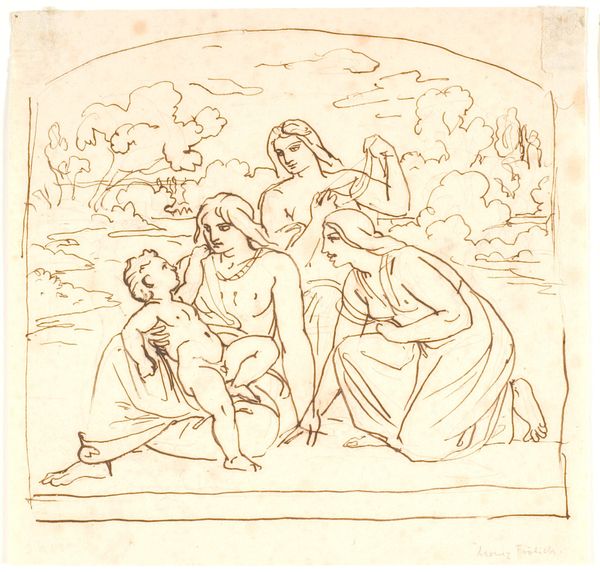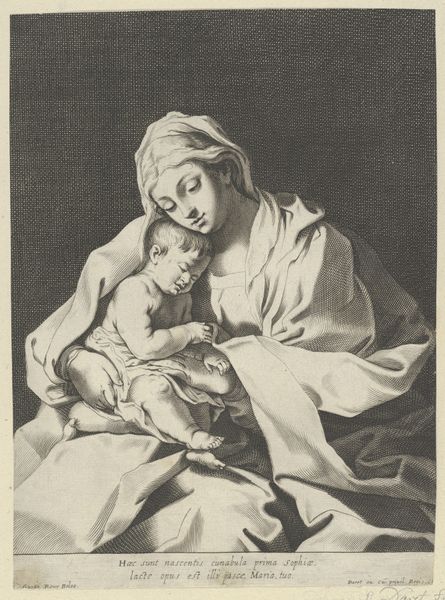
drawing, tempera, paper, ink, inorganic-material, chalk, pen
#
portrait
#
drawing
#
tempera
#
figuration
#
paper
#
11_renaissance
#
ink
#
ink drawing experimentation
#
inorganic-material
#
chalk
#
pen
#
portrait drawing
#
history-painting
#
italian-renaissance
Dimensions: 224 × 163 mm
Copyright: Public Domain
Curator: Here we have "Madonna and Child with Saint John," an evocative drawing whose author remains unknown. It resides in the collection of The Art Institute of Chicago, inviting contemplation. Editor: My immediate reaction is to the mood it conveys. There's a strange, muted sweetness. It's tender, but something about the sepia tones lends it a quality of distant sorrow. Curator: Let’s delve into the formal properties. Notice the layering of ink, chalk, and tempera on paper. The artist demonstrates considerable facility with line. See how a few quick strokes render form? The composition is relatively stable despite the figures’ dynamic poses. Editor: Precisely! The gestures of the children hold profound significance. St. John’s embrace speaks to adoration and, perhaps, premonition, while Christ holds a tiny cross – the symbol of sacrifice central to Christian belief. Curator: From a structural perspective, consider the strong verticality of the Virgin set against the dynamism of the putti, offering spatial complexity within a very economical presentation of the subject matter. Editor: And the iconography doesn't end there. Even Mary's slightly downturned gaze and enclosed pose represent humility and a sense of burden. Her representation, particularly in Italian Renaissance art, speaks of her dual role as queen of heaven and mother of sorrow. The artist, although unknown, obviously had a profound familiarity with religious symbols. Curator: Undoubtedly. And while we may not know the artist's name, their manipulation of line and shadow certainly deserves admiration for how they achieve spatial and atmospheric effects. Editor: It reminds me how art often bridges the space between personal sentiment and collective cultural understanding, doesn’t it? It reminds us of how human feeling is so very beautifully encoded in religious traditions. Curator: I find that considering the materiality and composition enhances my appreciation for the skill in realizing what are commonly held to be deeply personal ideals. Editor: Yes. Art like this makes those old stories perpetually new.
Comments
No comments
Be the first to comment and join the conversation on the ultimate creative platform.
